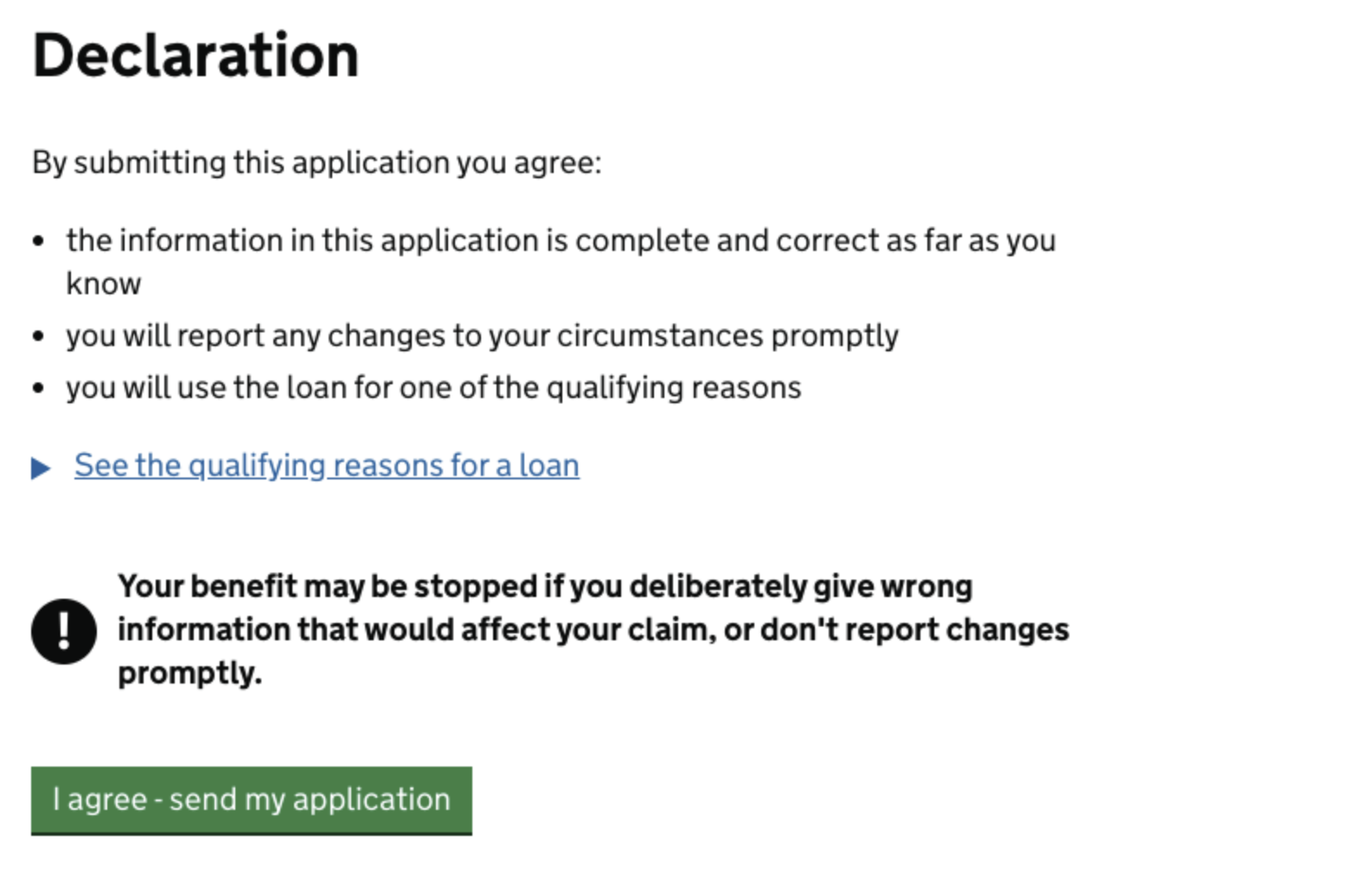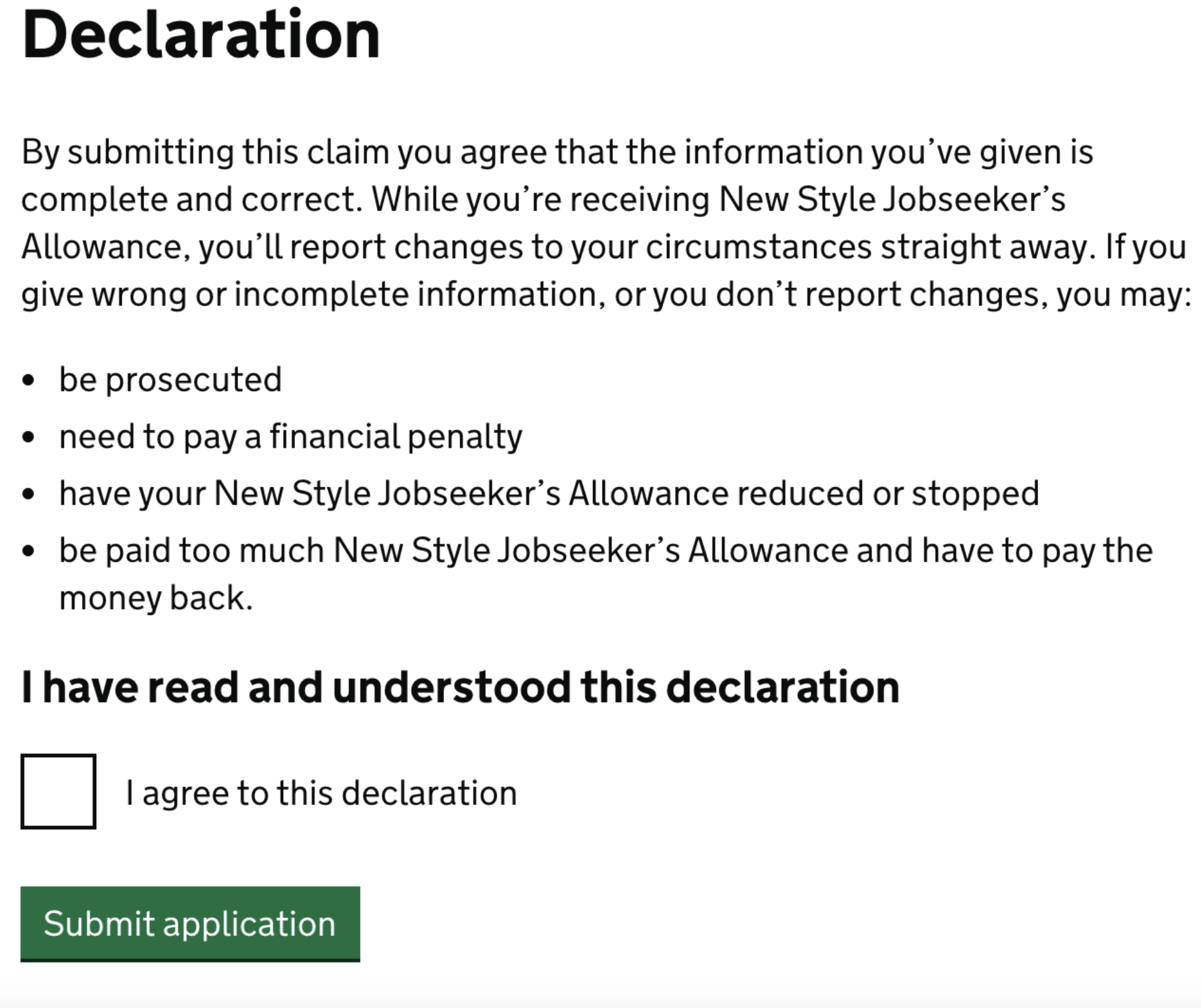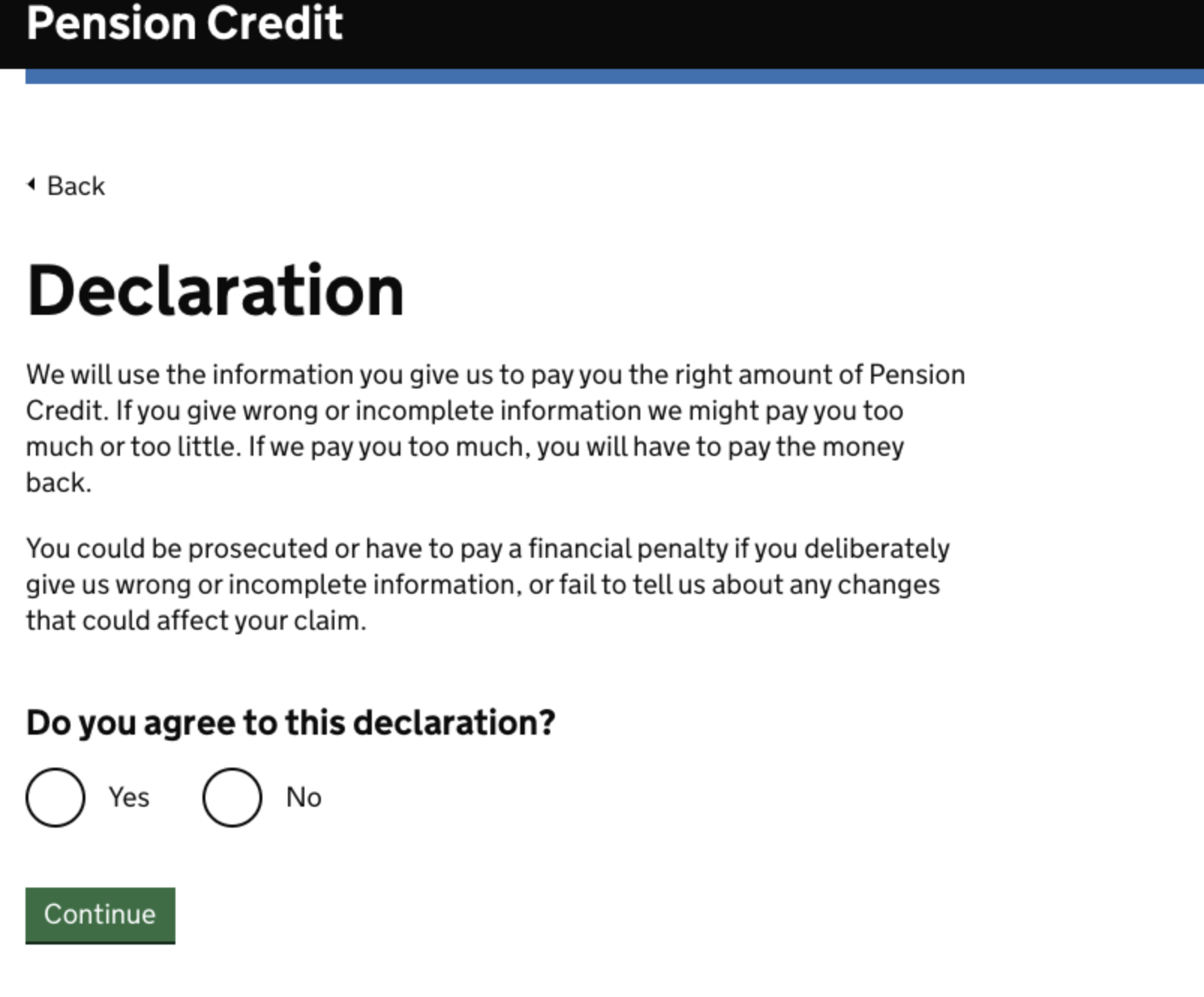Work in progress
This page is a design preview. It may not contain the latest guidance and may not behave as expected.
Current guidance can always be found at design-system.dwp.gov.uk.
Many services ask users to confirm that they have understood something or to formally state that the information they have given is true. This is often the last step before submitting an application.
There are several common ways to do this: we set out to see if we could standardise the way declarations are designed in DWP.
The declaration pattern aims to help users understand that the next step they take will be important, and that they are making a formal or official statement by doing it. For example, it could:
tell users about the legal consequences of submitting false information
make sure they understand the results of the next step, for example if a benefit might be affected or withdrawn
There was a backlog item for a declaration pattern on the GOV.UK Design System backlog. It was not published.
The HMRC design system also includes one: https://github.com/hmrc/design-patterns/issues/73
Home Office: https://design.homeoffice.gov.uk/patterns/make-a-declaration
HM Courts and Tribunals Service design system backlog
US Veterans Administration: https://design.va.gov/components/form/statement-of-truth
There are several common types of declaration:
We found examples of all of these in use.
We have not seen any evidence that checkboxes or radios increase compliance rates or understanding of the declaration. In the absence of this our pattern prefers the simpler interaction of a single button with clear text.
As the GOV.UK backlog discussion reports when discussing informed consent, "it’s not clear that clicking on a checkbox carries any more legal weight than just having the user click a button."
The main function of the pattern is to send a message to the user that this is a time to pause and check information, because the next step is consequential.
This is why the bottom of a Check answers page can be a good place for a declaration.
The Information Commissioner's Office has a useful page on what constitutes valid consent. This is in the context of consenting to use of data under GDPR but includes useful discussions of concepts such as a "clear and affirmative action".
The GOV.UK design system discussion says:
If your users are expressing reservations about completing a transaction because it doesn't feel 'important' enough, consider a signing ceremony.
For example:
- a text field where the user has to type 'I agree'.
- two radio buttons:
- 'Yes, I understand and agree
- No, I do not want to submit this claim'
Make it very clear which information is covered by the declaration. Signing ceremonies add extra work for people and may even put some users off the service. Only use them if you have evidence that they're helping.




Need help implementing this in a prototype or production build? Get support from the Design System team.
We depend on insights from real projects to update and improve the design system. If you use something we made, tell us how it went.
Send questions, comments or suggestions to the DWP Design System team.
Last updated: